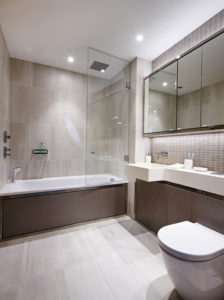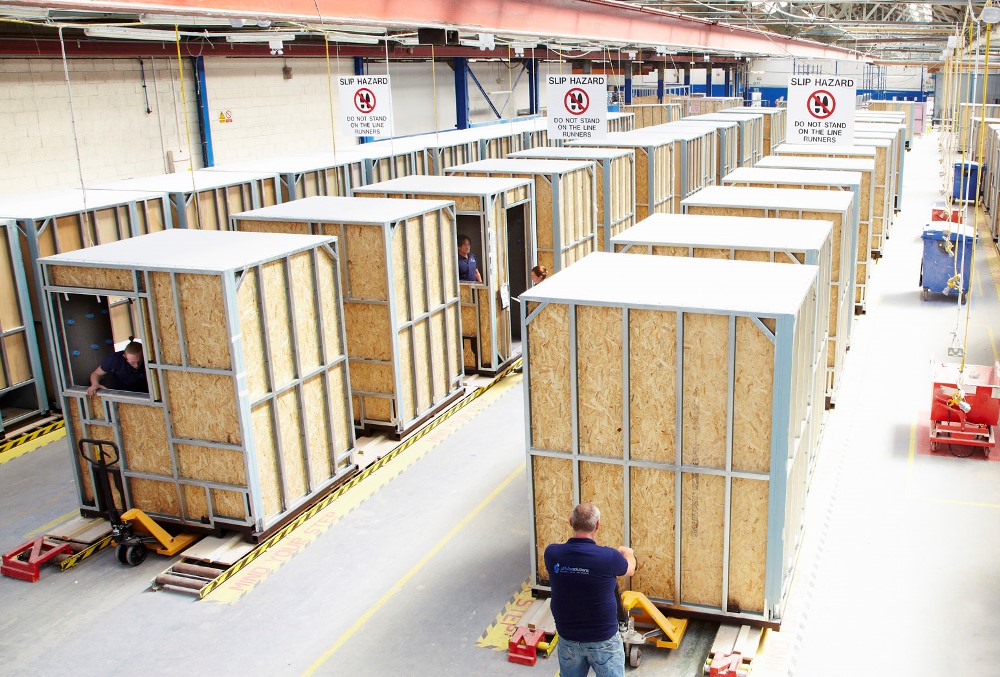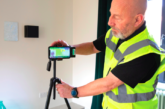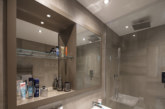 Richard Tonkinson, Executive Director of Offsite Solutions, outlines why the growth in the use of bathroom pods is set to continue into the future.
Richard Tonkinson, Executive Director of Offsite Solutions, outlines why the growth in the use of bathroom pods is set to continue into the future.
The use of bathroom pods in the residential sector has increased hugely in recent years. Commonly used in student accommodation and hotel projects, increasingly, pods are now being adopted across all market sectors and price points. Volumes in higher specification residential applications are also increasing.
What is a pod?
A pod is only pod for the purpose of manufacturing and transportation to site. Once it is installed it is simply a bathroom and is little different from an in-situ built bathroom. The principal function of the pod carcase is to allow fitting out and delivery to site. The carcase is typically either steel-framed or GRP composite, depending on the end use and budget.
Steel-framed pods allow traditional tiled interior finishes and a higher level of design flexibility. GRP pods have lower capital expenditure and are robust and easy to maintain and clean.
Innovations in pod technology include hybrid concrete/steel pods for high specification wet rooms and luxury bathrooms; demountable GRP pods for projects with restricted access; and hybrid GRP pods which offer an enhanced finish with options such as recesses and tiled feature walls. Floorless pods can be supplied for projects where a continuous level floor finish is required.

The benefits to housebuilders
Pods offer significant benefits for projects on constrained urban sites where the space for material storage is a particular challenge. We can supply fully completed bathrooms, delivered to a carefully planned programme for installation in just a few hours – removing the need for additional storage on site and reducing the number of vehicle movements.
One of the key drivers for bathroom pod procurement is to reduce programme. By moving bathroom construction into a controlled factory environment, the programme saving on a large residential project can be as much as 20 weeks. This means a faster return on investment for the developer or earlier occupation for the client – and much greater certainty of completion on time and to budget.
Site-based bathroom construction typically requires around seven different trades and 10-15 operations plus the required drying times. With offsite manufacture, this is reduced to a single pod supplier, which means less risk of delays and simplified procurement. Bathroom pods also reduce the requirement for skilled labour, site supervision and the associated health and safety obligations.
The production line environment of pod manufacture offers consistently higher quality, and improved productivity. The repetitive nature of bathroom pod production means that the units can be completed to higher quality standards than on site.
Pre-delivery testing should be rigorous and quality assurance procedures stringent for ready-to-use installation, mitigating defects and remedial works.

How to procure pods
The most critical consideration for bathroom pod procurement is to engage early. Pods should be designed into the first stages of a construction project and installation must be allowed for in the build-up of walls and floors to reduce the likelihood of access issues.
To optimise efficiency, specifiers should rationalise the number of design types in size and shape, and variations, such as left and right-hand versions, as far as possible. This is key to achieving the economies of scale required for efficient offsite manufacture.









